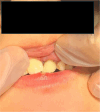Paediatric dental trauma: insights from epidemiological studies and management recommendations
- PMID: 39748355
- PMCID: PMC11697964
- DOI: 10.1186/s12903-024-05222-5
Paediatric dental trauma: insights from epidemiological studies and management recommendations
Abstract
Dental trauma is common in all age groups, although, epidemiologically, it is more common in children with studies that indicate that 15% of preschoolers and 20-25% of school-age children experience it. These injuries, which frequently call for immediate attention, can affect the hard tissues and supporting components of the teeth, and, because dental damage in deciduous teeth occurs frequently and affects speech, nutrition, and oral development, it is particularly worrying. After searching three databases, Scopus, Web of Science (WoS), and PubMed, and removing duplicates, 3,630 articles were screened, and 12 publications were included in the qualitative analysis. Due to their busy lifestyles, children are particularly susceptible to oral trauma and in certain areas and lower socioeconomic groups, the incidence is higher. From little fractures in the enamel to serious dislocations and avulsions, injuries vary and must be treated promptly in order to avoid consequences and to prevent long-term issues. Furthermore, a conservative treatment strategy is recommended to preserve tooth vitality and prevent extractions. Reducing the occurrence of dental injuries requires the implementation of preventive measures including mouthguard use and educational campaigns. In summary, this review emphasizes the importance of early diagnosis, immediate management, and long-term care, by synthesizing existing knowledge on the prevalence, types, management, complications, and prevention of dental trauma in deciduous teeth. Finally, it's important to underscore the need for continued research to refine treatment approaches.
Keywords: Children; Dental fractures; Dental injuries; Dental trauma; Emergency treatment.
© 2024. The Author(s).
Conflict of interest statement
Declarations. Ethics approval and consent to participate: All patients gave written informed consent to participate. Consent for publication: All parents/legal guardians gave Written Informed consent to publish pictures. Competing interests: The authors declare no competing interests. Disclaimer: The statements, opinions and data contained in all publications are solely those of the individual author(s) and contributor(s) and not of MDPI and/or the editor(s). MDPI and/or the editor(s) disclaim responsibility for any injury to people or property resulting from any ideas, methods, instructions or products referred to in the content.
Figures










Similar articles
-
Dental fillings for the treatment of caries in the primary dentition.Cochrane Database Syst Rev. 2009 Apr 15;(2):CD004483. doi: 10.1002/14651858.CD004483.pub2. Cochrane Database Syst Rev. 2009. Update in: Cochrane Database Syst Rev. 2016 Oct 17;10:CD004483. doi: 10.1002/14651858.CD004483.pub3. PMID: 19370602 Updated.
-
WITHDRAWN: Dental fillings for the treatment of caries in the primary dentition.Cochrane Database Syst Rev. 2016 Oct 17;10(10):CD004483. doi: 10.1002/14651858.CD004483.pub3. Cochrane Database Syst Rev. 2016. PMID: 27748505 Free PMC article.
-
Atraumatic restorative treatment versus conventional restorative treatment for managing dental caries.Cochrane Database Syst Rev. 2017 Dec 28;12(12):CD008072. doi: 10.1002/14651858.CD008072.pub2. Cochrane Database Syst Rev. 2017. PMID: 29284075 Free PMC article.
-
Micro-invasive interventions for managing proximal dental decay in primary and permanent teeth.Cochrane Database Syst Rev. 2015 Nov 5;2015(11):CD010431. doi: 10.1002/14651858.CD010431.pub2. Cochrane Database Syst Rev. 2015. PMID: 26545080 Free PMC article.
-
Preformed crowns for decayed primary molar teeth.Cochrane Database Syst Rev. 2015 Dec 31;2015(12):CD005512. doi: 10.1002/14651858.CD005512.pub3. Cochrane Database Syst Rev. 2015. PMID: 26718872 Free PMC article.
Cited by
-
Six-Year Implants Follow-Up After Guided Bone Regeneration Using Autologous Tooth Graft: Innovative Biomaterial for Bone Regeneration Tooth Transformer®.J Funct Biomater. 2025 May 9;16(5):172. doi: 10.3390/jfb16050172. J Funct Biomater. 2025. PMID: 40422836 Free PMC article.
-
Effectiveness and Clinical Indications of 2 × 4 Fixed Orthodontic Therapy in Regard to Mixed Dentition: A Systematic Review.Children (Basel). 2025 Jul 7;12(7):897. doi: 10.3390/children12070897. Children (Basel). 2025. PMID: 40723090 Free PMC article. Review.
-
Effectiveness of Dental Restorative Materials in the Atraumatic Treatment of Carious Primary Teeth in Pediatric Dentistry: A Systematic Review.Children (Basel). 2025 Apr 16;12(4):511. doi: 10.3390/children12040511. Children (Basel). 2025. PMID: 40310109 Free PMC article. Review.
-
Radiomics-based classification of pediatric dental trauma in periapical radiographs: a preliminary study.BMC Med Imaging. 2025 Aug 19;25(1):336. doi: 10.1186/s12880-025-01877-w. BMC Med Imaging. 2025. PMID: 40830854 Free PMC article.
-
Comparison of knowledge levels of parents whose children have and have not experienced permanent dental avulsion.Eur Arch Paediatr Dent. 2025 Jul 24. doi: 10.1007/s40368-025-01087-6. Online ahead of print. Eur Arch Paediatr Dent. 2025. PMID: 40705194
References
-
- Antipovienė A, Narbutaitė J, Virtanen JI. Traumatic Dental Injuries, Treatment, and Complications in Children and Adolescents: A Register-Based Study. Eur J Dent [Internet]. 2021 Jul [cited 2024 Jul 3];15(3):557–62. https://www.ncbi.nlm.nih.gov/pmc/articles/PMC8382465/ - PMC - PubMed
-
- Pederielli S, Mirelli C, Pozzi F, Giannì AB, Biagi R. Dental Trauma at a University Dental Clinic in Milan including the SARS-CoV-2 Period. Dent J [Internet]. 2021 Dec 2 [cited 2024 Jul 22];9(12):145. https://www.ncbi.nlm.nih.gov/pmc/articles/PMC8700225/ - PMC - PubMed
-
- Santos Filho PC, de Quagliatto F, Simamoto PS, Soares PC. Dental trauma: restorative procedures using composite resin and mouthguards for prevention. J Contemp Dent Pract. 2007;8(6):89–95. - PubMed
-
- Olaru M, Sachelarie L, Calin G. Hard Dental Tissues Regeneration—Approaches and Challenges. Materials [Internet]. 2021 May 14 [cited 2024 Jul 3];14(10):2558. https://www.ncbi.nlm.nih.gov/pmc/articles/PMC8156070/ - PMC - PubMed
Publication types
MeSH terms
LinkOut - more resources
Full Text Sources
Miscellaneous

